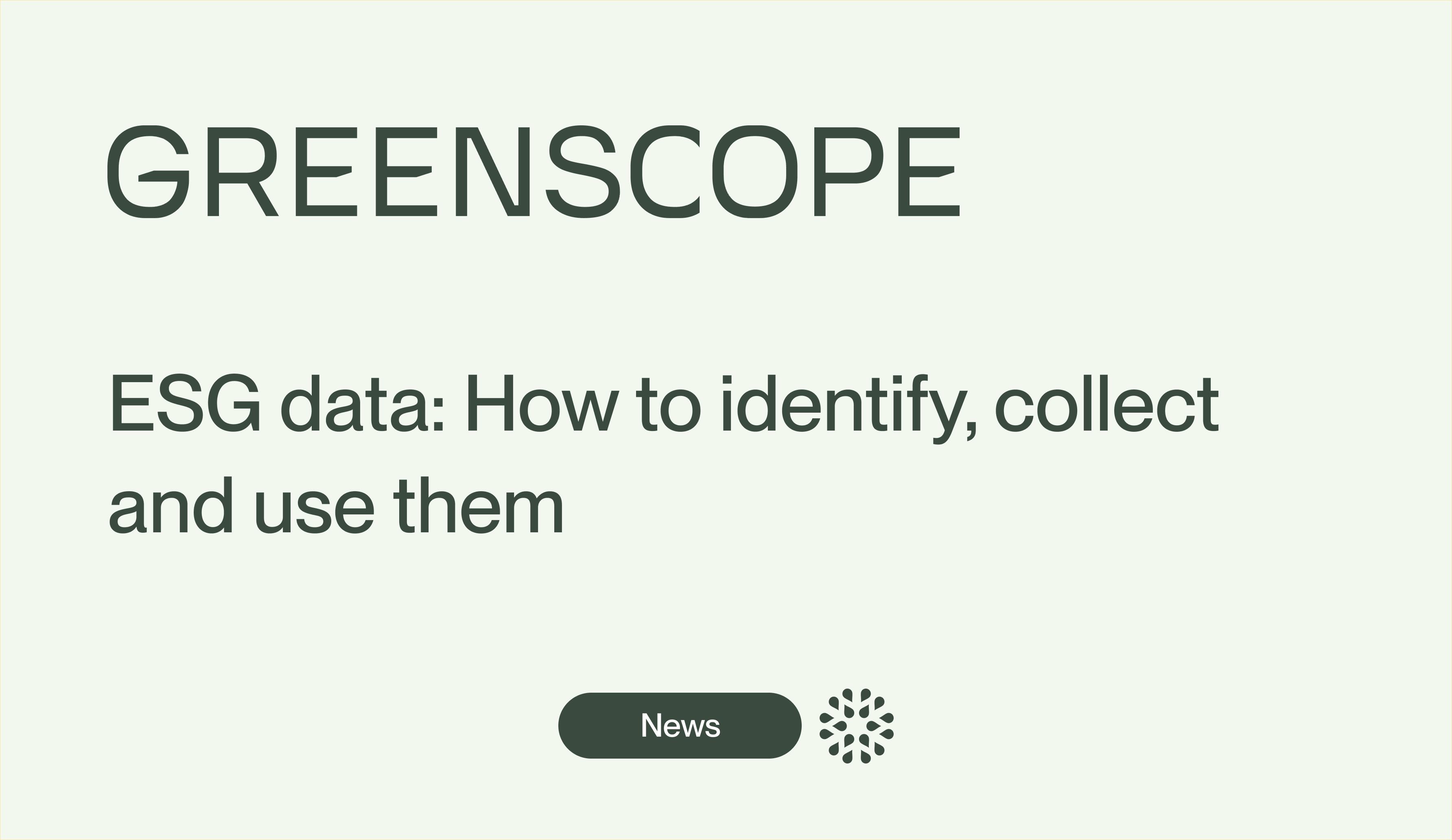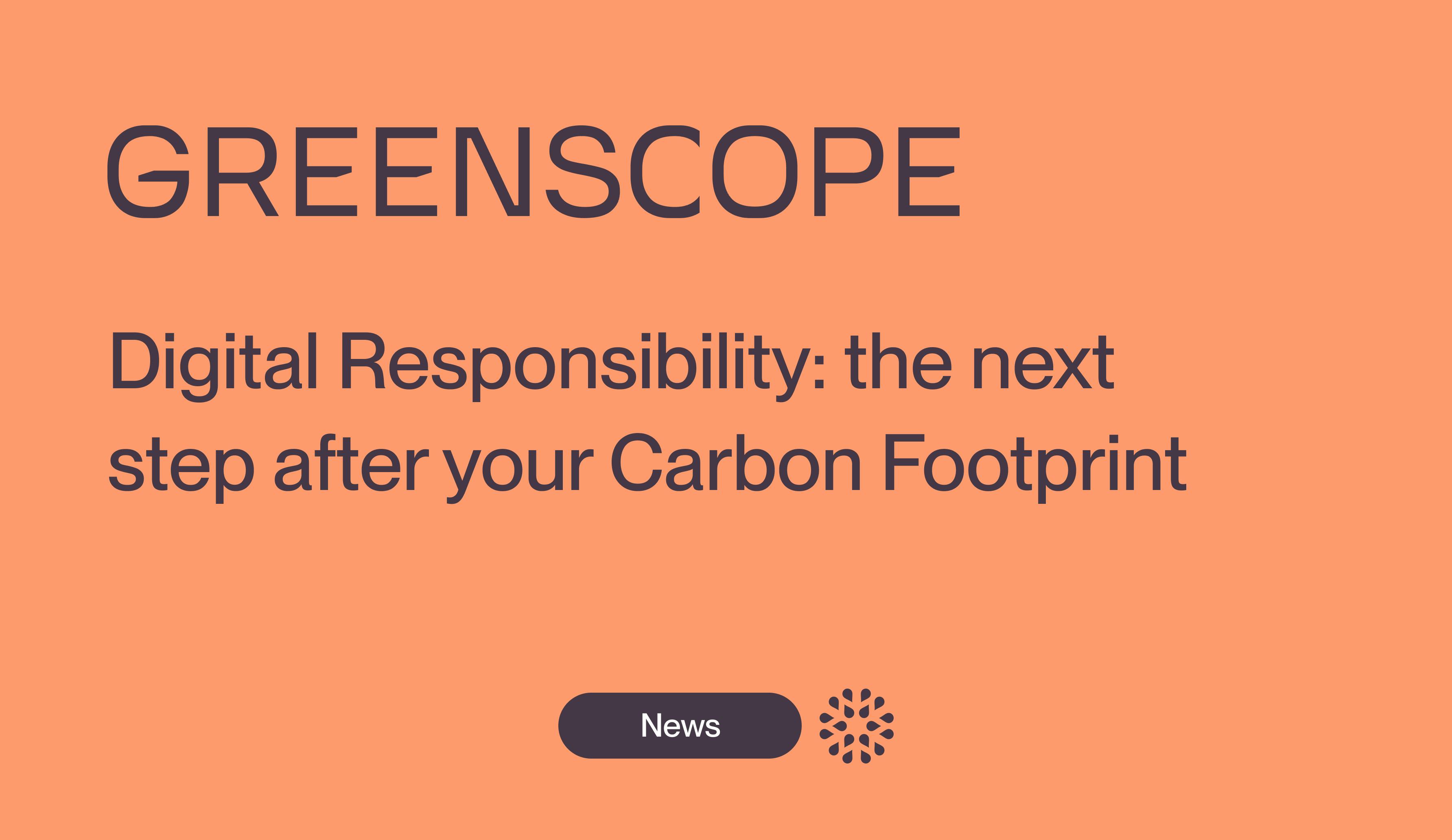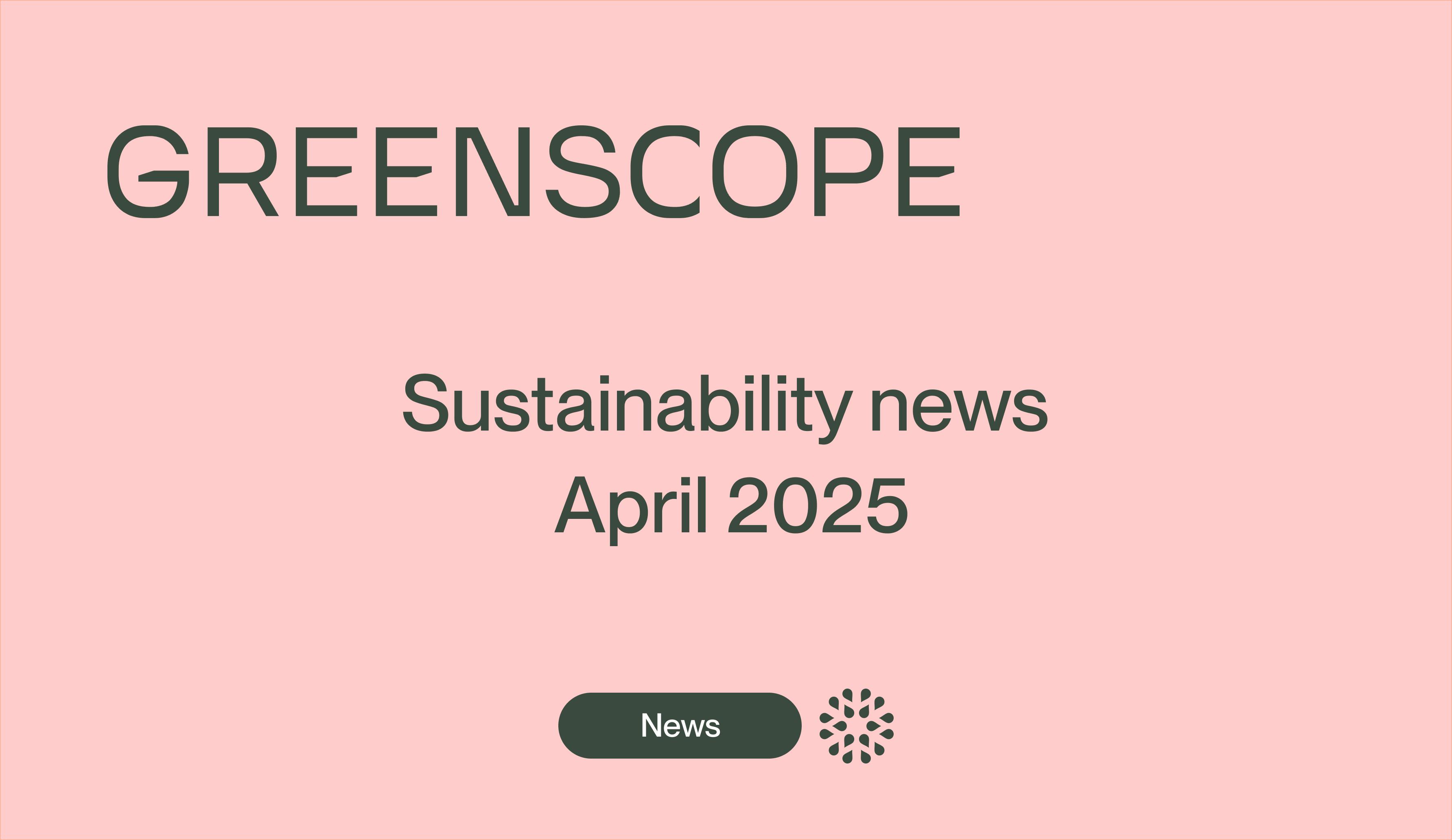ESG Data: How to identify, collect, and use them
Learn how to structure your ESG data to better drive your commitments and enhance your sustainable performance

In a world where transparency and sustainability have become strategic issues, ESG data (Environmental, Social, and Governance) play a key role. Today, companies are increasingly measured by both their financial and non-financial performances and the way they conduct their business sustainably. ESG data thus becomes a tool for evaluating, making strategic decisions, and differentiating companies from one another. They are essential because they influence a company's image, reputation, and value.
But how to identify the right metrics, structure their collection, and exploit them effectively? Between regulatory requirements, stakeholder expectations, and technological tools, managing ESG data requires a very rigorous approach. This article explores best practices for selecting, collecting, and valuing this information to improve organizational performance and compliance.
What is ESG data?
ESG data is measurable information related to an organization's Environmental, Social, and Governance criteria. It allows for reporting on sustainable performance and impacts in these areas and can involve carbon footprint, diversity, or regulatory compliance. This regulatory compliance with ESG issues is discussed in our article dedicated to ESG compliance.
Environmental data
- Greenhouse gas emissions (GHG): this data can be obtained via a carbon footprint assessment (tCO2eq)
- Resource consumption: water used (m³), energy consumption (kWh) including renewable energy (%)
- Pollution and waste: hazardous waste produced (tons), recycled waste (%)
- Biodiversity and impact on ecosystems: deforestation (ha)
Social data
- Working conditions: workplace accident rate (%), training hours per employee (hours/year/employee)
- Diversity and inclusion: percentage of women in management positions (%), pay equity (Gender Equality Index)
- Human rights and supply chain: supplier audits, age verification processes for workers
- Stakeholder relations: employee satisfaction (score), number of social disputes
Governance data
- Ethics and compliance: number of fines for non-compliance, anti-corruption policies
- Board structure and independence: % of independent directors, board diversity
- Executive compensation: CEO/median employee pay ratio, variable component linked to ESG criteria
- Transparency and reporting: publication of ESG reports, Net Zero commitments
These various data points address the different ESG criteria explained in this article.
Who uses ESG data?
Why collect ESG data?
- Compliance with regulations: With the SFDR, CSRD, or Green Taxonomy, companies are required to provide detailed reports with numerous ESG data points. There is a transparency obligation for companies subject to various regulations (CSRD, SFDR, or ISSB standards). For your information, the ISSB (International Sustainability Standards Board) issues IFRS S1/S2 standards that are not all mandatory yet but aim for global harmonization of ESG reporting
- Manage and mitigate risks: Collecting data allows for awareness and understanding of the risks, impacts, and materiality of various ESG issues
- Environmental risk: resource levels, exposure to climate change
- Social risk: scandals and controversies, working conditions
- Governance risk: lack of transparency can lead to risks (corruption, conflicts of interest)
- Attract investors and access sustainable financing: Investment funds and banks are increasingly incorporating ESG criteria into their decisions. For more information on this topic, an article is available on our site regarding ESG investment. Thus, a company that has structured an internal ESG data collection process and periodically publishes ESG data can more easily secure green loans and issue sustainable bonds
- Optimize resource management and reduce costs: Better measurement of energy, water consumption, and CO₂ emissions enables the identification of efficiency levers and cost reduction
- Enhance trust and improve reputation: Consumers, employees, and partners demand greater transparency regarding corporate CSR commitments
Who uses ESG data?
ESG data is utilized by a wide range of economic and financial players to assess companies' sustainable performance, manage risks, and guide their strategic decisions.
- Investors and investment funds. They incorporate ESG criteria to:
- Analyze long-term risks and opportunities
- Avoid investing in companies exposed to high ESG risks (pollution, human rights violations, corruption)
- Align their portfolios with sustainable objectives (e.g., Net Zero commitments)
- Comply with regulations such as the SFDR (Sustainable Finance Disclosure Regulation), which mandates sustainability reporting on investments
- Invest in highly-rated ESG companies via specialized indices (MSCI ESG Leaders, FTSE4Good, etc.)
- Banks and financial institutions. They use ESG data to:
- Assess corporate creditworthiness and incorporate ESG risks into their credit analyses
- Determine financing conditions: a good ESG score can secure preferential rates on green loans or sustainable bonds
- Comply with banking ESG regulations (e.g., EU Green Taxonomy, ECB climate requirements)
- Finance sustainable projects and direct capital towards ecological transition
- Companies and financial/CSR departments. They collect and analyze their own ESG data to:
- Improve their non-financial performance and attract responsible investors
- Compare to competitors and respond to stakeholder expectations
- Comply with ESG reporting regulations such as the CSRD (Corporate Sustainability Reporting Directive) in Europe
- Avoid sanctions and improve their reputation by anticipating environmental and social risks
- Regulators and governments. They impose standards and control ESG data to:
- Ensure transparency of financial markets and prevent greenwashing
- Set goals for energy and social transition in line with climate agreements
- Establish ESG reporting obligations (e.g., green taxonomy, SFDR, CSRD)
How to collect ESG data?
Examples of leading ESG companies
Bureau Veritas: the major player in the field of inspection and certification obtained a score of 84/100 during its annual assessment by S&P Global Corporate Sustainability Assessment (CSA). Thus, among the 184 companies assessed in the professional services sector, it ranks second. This is explained by the strengthening of its Environmental Management Policy and governance with reporting and transparency as well as a focus on Risk Management.
L'Oréal: in 2024, the Forum for Responsible Investment (FIR) questioned CAC 40 companies on their ESG commitments at the 2023 general meetings. And it is L'Oréal which ranks first (with Veolia). The company stands out notably on indicators such as taking into account impacts on climate and biodiversity as well as attention paid to employee wages, employee savings, and responsible lobbying.
STMicroelectronics: as a semiconductor product manufacturer, the company has a very good score in each of the ESG criteria. This is explained by the implementation of programs exclusively regarding environmental data: program to reduce energy consumption, waste reduction, recycling initiatives.
These compliant companies can serve as a benchmark for your strategy.
Sources of ESG data
To effectively integrate ESG data, companies must leverage various sources:
- Internal sources:
- Financial reports: provide information on investments in sustainable initiatives and costs associated with ESG practices
- Internal audits: assess compliance with internal ESG policies and identify areas for improvement
- ERP systems and internal databases: collect data on energy consumption, carbon emissions, workforce diversity, and other key ESG indicators
- External sources:
- Public data: include government reports, sector statistics, and relevant academic publications
- ESG rating agencies: provide independent assessments of companies' ESG performance, helping to compare performance against industry peers
- Suppliers and partners: offer insights into supply chain sustainability and third-party ESG practices
- NGOs and media: provide external perspectives on the company's social and environmental impacts and can highlight areas requiring particular attention
ESG data integration process
- Data Collection: The first step is to identify and gather relevant ESG information, ensuring its accuracy, reliability, and timeliness. As previously mentioned, this data can come from internal sources (financial reports, internal audits, ERP, etc.) or external sources (ESG rating agencies, suppliers, NGOs, public data, etc.). It is essential to ensure data traceability and implement centralization tools to facilitate its use
- Analysis and Evaluation: Once the data has been collected, it is necessary to analyze it to identify trends, risks, and opportunities related to ESG criteria. This evaluation can be conducted internally with dedicated teams (CSR managers, finance department, risk management), but also by relying on external experts. Engaging specialized consulting firms or ESG data processing platforms like Greenscope provides a finer and comparative view of the company's ESG performance. A good analysis turns raw data into actionable indicators for strategic decision-making
- Reporting and Communication: Prepare transparent reports in accordance with international standards, such as the Global Reporting Initiative (GRI) or the Sustainability Accounting Standards Board (SASB), to inform stakeholders of the company's ESG performance. Highlighting ESG data is crucial here: it is important to structure it in an understandable and impactful way, using dynamic dashboards, graphic visualizations, and performance indicators adapted to each audience's needs (investors, regulators, clients, employees)
- Continuous Improvement: The integration of ESG data does not stop at reporting; it should be used to continuously improve the company’s practices. The results obtained are used to adjust ESG strategies, set concrete and measurable objectives, and monitor the progress made. Regular monitoring, via ESG dashboards or internal audits, helps identify improvement levers and adapt the strategy according to new regulatory requirements and market expectations
How to automate ESG data collection?
As we have seen, collecting ESG data can be a long and complex task. Some regulatory frameworks require a lot of data, and it is sometimes necessary to use many sources that are not always easy to compile. Therefore, automating ESG data collection with ESG software can be a solution. To find the software that suits your expectations and needs, here is a comparison available.
So, do not let ESG data be a constraint, turn it into a lever of performance and attractiveness. Contact us to be accompanied in this endeavor!
Our latest articles

Responsible Digital: the next step after your Carbon Footprint assessment
Understand the importance of implementing a responsible digital approach after completing your carbon footprint assessment

CSR News - April 2025
Discover the key developments: ongoing projects, standards updates, new official documents.

ESG Data: How to identify, collect, and use them
Learn how to structure your ESG data to better drive your commitments and enhance your sustainable performance

Guide on ESG performance: definition, measurement, and impact on business
ESG performance, a driving force for responsible growth: follow our guide to understand everything in just a few minutes



